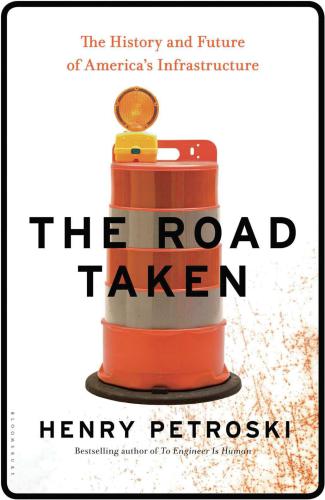
The Road Taken
The History and Future of America's Infrastructure
کتاب های مرتبط
- اطلاعات
- نقد و بررسی
- دیدگاه کاربران
نقد و بررسی

November 2, 2015
Public infrastructure is often deemed interesting only to policy wonks, but Petroski (The Pencil: A History of Design and Circumstance), a professor of history and civil engineering at Duke University, proves that he can make it accessible and fascinating for a wider readership. His goal is to create a more informed electorate that will weigh in with political leaders about long-standing safety issues posed by obsolete and decrepit infrastructure. But the book is more than a laundry list of trouble spots; Petroski offers historical context for today’s challenges, including the debate over whether the federal government or the states should pick up the tab for repair work and new construction. The inclusion of colorful details (Illinois courts once deemed stop signs for city streets a “violation of the right of individuals to cross streets”) prevents the material from coming across as dry. Petroski doesn’t underplay the difficult of making progress in the face of Washington gridlock, but he makes the cost of inaction clear, credibly estimating that “the nation’s degrading infrastructure will cost American households... in excess of $150 trillion” over the next three decades. His book may well move readers to lobby their elected officials.

November 15, 2015
A gifted author, civil engineer, and Duke University professor, Petroski has previously written widely on technology, including Invention by Design: How Engineers Get from Thought to Thing (1996) and Success through Failure: The Paradox of Design (2006). Here he turns from the theoretical side of engineering to the reality. Our infrastructure is crumbling. Our roads (to which an association of engineers assigns a D grade) and bridges (C+) are structurally deficient. But after a frightfully alarming opening section, Petroski provides a history of public projects (bridges, highways, city streets, signage, lighting, etc.) and the graft, political deal-making, and plain ineptitude surrounding them, which, though fascinating and predictably clear and well written, is less the call to arms that one expects. Yet, by examining projects like the Walkway over the Hudson and New York's High Line, and by projecting the applicability of smart cars and smart roads, Petroski offers a more optimistic prognosis than his colleagues' dire evaluations suggest. This is vital reading.(Reprinted with permission of Booklist, copyright 2015, American Library Association.)

























دیدگاه کاربران